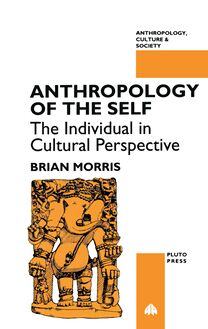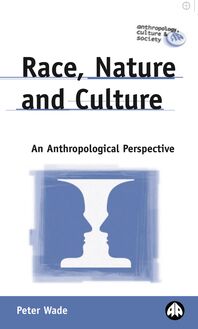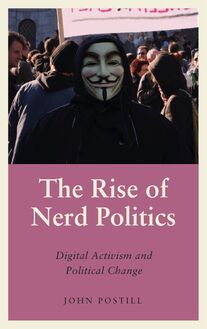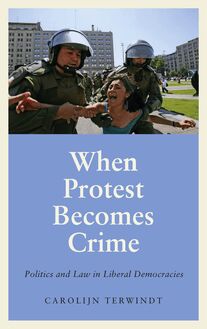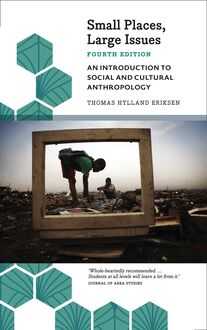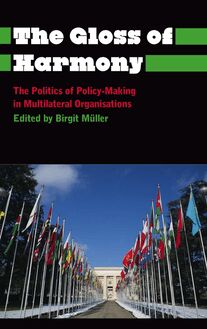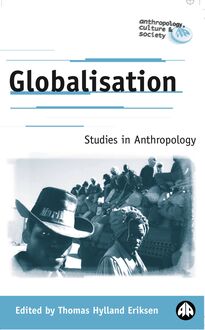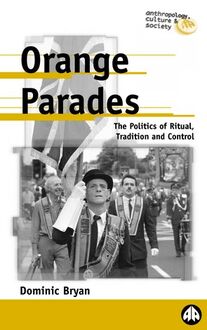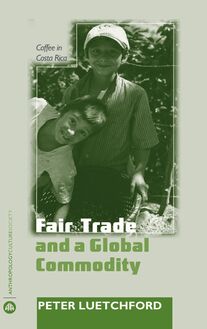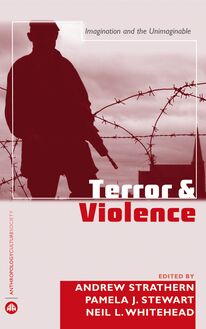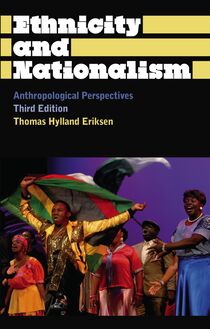-
 Univers
Univers
-
 Ebooks
Ebooks
-
 Livres audio
Livres audio
-
 Presse
Presse
-
 Podcasts
Podcasts
-
 BD
BD
-
 Documents
Documents
-
- Cours
- Révisions
- Ressources pédagogiques
- Sciences de l’éducation
- Manuels scolaires
- Langues
- Travaux de classe
- Annales de BEP
- Etudes supérieures
- Maternelle et primaire
- Fiches de lecture
- Orientation scolaire
- Méthodologie
- Corrigés de devoir
- Annales d’examens et concours
- Annales du bac
- Annales du brevet
- Rapports de stage
La lecture à portée de main
262 pages
English
Découvre YouScribe en t'inscrivant gratuitement
Je m'inscrisTerror and Violence , livre ebook
Découvre YouScribe en t'inscrivant gratuitement
Je m'inscris
Obtenez un accès à la bibliothèque pour le consulter en ligne
En savoir plus
En savoir plus
262 pages
English
Obtenez un accès à la bibliothèque pour le consulter en ligne
En savoir plus
En savoir plus

Description
What is terror? What are its roots and its results -- and what part does it play in human experience and history? This volume offers a number of timely and original anthropological insights into the ways in which acts of terror -- and reactions to those acts -- impact on the lives of virtually everyone in the world today, as perpetrators, victims or witnesses.
As the contributors to this volume demonstrate, what we have come to regard as acts of terror -- whether politically motivated, or state-sanctioned -- have assumed many different forms and provoked widely differing responses throughout the world.
At a deeper level, the contributors explore the work of the imagination in extreme contexts of danger, such as those of terror and terrorism. By stressing the role of the imagination, and its role in amplifying the effects of experience, this collection brings together a coherent set of analyses that offer innovative and unexpected ways of understanding a major global problem of contemporary life.
Introduction Andrew Strathern and Pamela J. Stewart University of Pittsburgh, USA
1. 'Terror Against Terror': 9/11 or 'Kano War' in the Nigerian Electronic Press? Misty L Bastian Franklin and Marshall College, USA
2. Vigilante Organisations, the Politics of Theft, and Imagined Conceptions of Community among the Kuria of Kenya Suzette Heald Brunel University, UK
3. Unspeakable Crimes: Athenian-Greek Perceptions of Local and International Terrorism Elisabeth Kirtsoglou University of Wales, Lampeter, UK
4. The Indian State, its Sikh Citizens, and Terror Joyce Pettigrew Queens University of Belfast, UK
5. Between Victims and Assailants, Victims and Friends: Sociality and the Imagination in Indo-Fijian Narratives of Rural Violence during the May 2000 Fiji Coup Susanna Trnka University of Auckland, New Zealand
6. Narratives of Violence and Perils of Peace-Making in North-South Cross-Border Contexts, Ireland Pamela J. Stewart and Andrew Strathern University of Pittsburgh, USA
7. The Sign of Kanaima, the Space of Guayana and the Demonology of Development Neil L. Whitehead University of Wisconsin, Madison, USA
8. Imaginary Violence and the Terrible Mother: The Imagery of Balinese Witchcraft Michele Stephen La Trobe University, Australia
9. Afterword Neil L. Whitehead University of Wisconsin, Madison, USA
As the contributors to this volume demonstrate, what we have come to regard as acts of terror -- whether politically motivated, or state-sanctioned -- have assumed many different forms and provoked widely differing responses throughout the world.
At a deeper level, the contributors explore the work of the imagination in extreme contexts of danger, such as those of terror and terrorism. By stressing the role of the imagination, and its role in amplifying the effects of experience, this collection brings together a coherent set of analyses that offer innovative and unexpected ways of understanding a major global problem of contemporary life.
Introduction Andrew Strathern and Pamela J. Stewart University of Pittsburgh, USA
1. 'Terror Against Terror': 9/11 or 'Kano War' in the Nigerian Electronic Press? Misty L Bastian Franklin and Marshall College, USA
2. Vigilante Organisations, the Politics of Theft, and Imagined Conceptions of Community among the Kuria of Kenya Suzette Heald Brunel University, UK
3. Unspeakable Crimes: Athenian-Greek Perceptions of Local and International Terrorism Elisabeth Kirtsoglou University of Wales, Lampeter, UK
4. The Indian State, its Sikh Citizens, and Terror Joyce Pettigrew Queens University of Belfast, UK
5. Between Victims and Assailants, Victims and Friends: Sociality and the Imagination in Indo-Fijian Narratives of Rural Violence during the May 2000 Fiji Coup Susanna Trnka University of Auckland, New Zealand
6. Narratives of Violence and Perils of Peace-Making in North-South Cross-Border Contexts, Ireland Pamela J. Stewart and Andrew Strathern University of Pittsburgh, USA
7. The Sign of Kanaima, the Space of Guayana and the Demonology of Development Neil L. Whitehead University of Wisconsin, Madison, USA
8. Imaginary Violence and the Terrible Mother: The Imagery of Balinese Witchcraft Michele Stephen La Trobe University, Australia
9. Afterword Neil L. Whitehead University of Wisconsin, Madison, USA
Sujets
Informations
| Publié par | Pluto Press |
| Date de parution | 20 novembre 2005 |
| Nombre de lectures | 0 |
| EAN13 | 9781849642750 |
| Langue | English |
| Poids de l'ouvrage | 1 Mo |
Informations légales : prix de location à la page 0,6250€. Cette information est donnée uniquement à titre indicatif conformément à la législation en vigueur.
Extrait
TERROR AND VIOLENCE
Imagination and the Unimaginable
Edited by ANDREWSTRATHERN, PAMELAJ. STEWART ANDNEILL. WHITEHEAD
P Pluto Press LONDON • ANN ARBOR, MI
First published 2006 by PLUTO PRESS 345 Archway Road, London N6 5AA and 839 Greene Street, Ann Arbor, MI 48106
www.plutobooks.com
Copyright © Andrew Strathern, Pamela J. Stewart and Neil L. Whitehead 2006
The right of the individual contributors to be identified as the authors of this work has been asserted by them in accordance with the Copyright, Designs and Patents Act 1988
British Library Cataloguing in Publication Data A catalogue record for this book is available from the British Library
ISBN 0 7453 2399 5 hardback ISBN 0 7453 2398 7 paperback
Library of Congress Cataloging in Publication Data applied for
10 9 8 7 6 5 4 3 2 1
Designed and produced for Pluto Press by Chase Publishing Services Ltd, Fortescue, Sidmouth EX10 9QG, England Typeset from disk by Stanford DTP Services, Northampton, England Printed and bound in the European Unionby Antony Rowe Ltd, Chippenham and Eastbourne, England
CONTENTS
List of Figures Acknowledgements
Introduction: Terror, the Imagination, and Cosmology Andrew Strathern and Pamela J. Stewart
1 ‘Terror against Terror’: 9/11 or ‘Kano War’ in the Nigerian Electronic Press? Misty L. Bastian 2 Unspeakable Crimes: Athenian Greek Perceptions of Local and International Terrorism Elisabeth Kirtsoglou 3 The Indian State, its Sikh Citizens, and Terror Joyce Pettigrew 4 Between Victims and Assailants, Victims and Friends: Sociality and the Imagination in Indo-Fijian Narratives of Rural Violence during the May 2000 Fiji Coup Susanna Trnka 5 Narratives of Violence and Perils of Peace-Making in North–South Cross-Border Contexts, Ireland Andrew Strathern and Pamela J. Stewart 6 The Sign ofKanaimà, the Space of Guayana, and the Demonology of Development Neil L. Whitehead 7 Imaginary Violence and the Terrible Mother: The Imagery of Balinese Witchcraft Michele Stephen
Afterword: The Taste of Death Neil L. Whitehead
Notes on ContributorsIndex
vi viii
1
40
61
89
117
142
171
192
231
239 241
LIST OF FIGURES
1 A leader in the Mount Hagen area, Western Highlands Province, Papua New Guinea, in the 1960s 2 Two senior men watch the development of a dispute over pigs given away between groups in the Mount Hagen area, Papua New Guinea, 1960s 3 Two men enter into an altercation over pigs in an exchange. Others holding long staves attempt to intervene 4 A truckload of riot police drawn up on the site of a battle between major groups in the peri-urban area near to Mount Hagen, Papua New Guinea, 1970s, prior to Independence in 1975 5 A riot police commander, helmeted, and an Australian government officer (Assistant District Officer) watch the potential movement of enemies across an old mission airstrip 6 The aftermath of a death. Women, their bodies plastered with yellow and white clay, gather round a pole on the top of which the ceremonial head-dress and bark belt of the dead man are suspended 3.1 A village home, destroyed in a battle between police and militants 3.2 Interior view of the destruction of a neighbouring house 3.3 A village house deserted through fear of the police 3.4 The marble surrounds of the Golden Temple precinct damaged by tanks during the army offensive in 1984 4.1 One of the many Indian-run establishments that were attacked in the hours following George Speight’s coup attempt 4.2 Military checkpoints were erected throughout the Suva–Nausori corridor to monitor residents and enforce the curfew 5.1 Orange Order march, near the border with County Donegal 5.2 Orange Order march, July 2003 5.3 Flute-players’ march, Orange Order, July 2003
vi
16
17
18
19
20
21
102
102 103
104
122
132
158 158 159
List of Figures5.4 Limavady Orange Order march, July 2003 5.5 University of Ulster at Magee, in the City of Derry on the border between the Republic and Northern Ireland 5.6 Orange Order parade, Rossnowlagh, south-west County Donegal, July 2003 5.7 Plaque is set into the walls of the City of Derry, marked with the date 12 July 1937, commemorating the deaths of soldiers who died in the Great War, 1914–18 6.1Kanaimàin the Brazilian cultural imaginary – illustration from a RPG (role-playing game) 7.1 The Goddess Durga (Balinese temple carving) 7.2 Aleyakholding the corpse of an infant (Balinese temple carving) 7.3 Aleyakclutching the severed head of a child (Balinese temple carving)
vii 159
160
161
166
185 197
199
200
ACKNOWLEDGEMENTS
We want to thank the set of people who contributed essays to this volume. Each of them was invited, by ourselves as editors, to discuss the topic of terror and violence in relation to the imagination and the unimaginable. They have all done so admirably. Andrew StrathernandPamela J. Stewartwant also to thank the Center for West European Studies (University of Pittsburgh) for support of our research; the University of Aberdeen’s Research Institute of Irish and Scottish Studies (RIISS), where we were provided with affiliations and office space in 2004 to work on this project as well as others; the Institute of Ethnology (Academia Sinica, Taipei, Taiwan) for affiliations and office space during parts of 2002, 2003, 2004 and 2005; and the Dong-Hwa University (Hualien, Taiwan) and Peking University (Beijing, China) for the opportunity to provide lectures and discuss our thinking on these topics and others during 2004. We thank the Harry Frank Guggenheim Foundation and the Hewlett International Grant Program (University Center for International Studies, University of Pittsburgh) for support of research that fed into our chapters in this book. We especially thank our friend and colleague, Prof. Richard Feinberg (The Kent State University), for inviting the two of us to the Central States Anthropological Society’s 2004 meeting where Andrew Strathern presented some of our thoughts on the topic of terror and the imagination in the Keynote address to the Society (Andrew Strathern and Pamela J. Stewart (2005), ‘Witchcraft, Sorcery, Rumors, and Gossip: Terror and the Imagination – A State of Lethal Play’,The Central States Anthropological Society Bulletin, 40(1): 8–14). We especially thank also all of our interlocutors in Ireland, Papua New Guinea and Taiwan. Neil L. Whiteheadwishes to thank the participants in theLegacies of Violenceresearch group at the University of Wisconsin-Madison for the opportunity to present many ideas on this topic, and the International Institute of the University of Wisconsin-Madison for funding to support theLegacies of Violence project: (http://www.intl-institute.wisc.edu/ ResearchCircles/LOVindexpage.htm). Thanks are also due to Philippe Descola at the Collège de France, Anne-Christine Taylor at the Ecole des Hautes Etudes (Paris) and the participants in theCultures of Violence conference series at Mansfield College, Oxford, as well as my fellow panellists for the session ‘The Violence of Representation’, at the American Anthropological Association, Chicago, November 2003.
Pamela J. Stewart, Andrew Strathern and Neil L. Whitehead 1 March 2005
viii
INTRODUCTION: TERROR, THE IMAGINATION, AND COSMOLOGY
Andrew Strathern and Pamela J. Stewart
DEFINITIONAL PRELIMINARIES
Terror and violence are topics that are deeply emotive, are widely written about, and have come to occupy a peculiarly prominent place in the images and experiences that surround the everyday lives of people in many parts of the world. In its essentials, the situation is not new, since violence and fears of violence have probably been a part of human life as long as humans have existed (see Laqueur 1987). However, each historical period tends to bring with it a new opening of various themes surrounding this topic. In the world today, the major conflicts between the communist and the capitalist regimes, signalled as the Cold War, have been replaced by a ‘hot war’ of conflicts ideologically centring on the imputed actions of Al-Qaeda and the various sovereign states that see themselves in different ways as involved in ‘the war on terror’ – which means ‘the struggle against terrorists’. This hot war has witnessed fewer words and more actions: enactments of violent destruction and death that have often caught people by surprise, going beyond their earlier imaginations of how events would turn out. And they have subsequently given rise to seismic shifts of perceptions, policy, and ideological responses, as governments and peoples attempt to encompass such events within not only their imaginations but also their assessments of how to confront them in the present and if possible prevent their recurrence in the future. As with the global Cold War period, these efforts are accompanied by new written commentaries, dramas, poetry, art, television programmes, and film-making, which are all a part of the collective and individual constructions of a political life that now takes into account what was formerly unimaginable but rapidly becomes almost a part of everyday experience. The development of imaginaries of this kind takes place on both sides of any given conflict, often with nearly identical but politically opposed rhetorics supporting them.
1
2Terror and Violence Without such frameworks of thought and emotion the conflicts would not proceed in the same way or at the same levels. Media sources, by their very immediacy, we might say, can greatly intensify and magnify the perceptions involved of events; but they do so not only by presenting visual images (which are nonetheless devoid of other sensations such as heat, dust, cold, intense smells – see Sontag 2003), but by appealing to, and conforming with, basic scenarios in people’s minds, mental habitus in the terms of Pierre Bourdieu (Bourdieu 1977), connected to cosmic schemes of ‘good versus evil’ and ‘the lessons of history’. We should make it clear here that our principal concern in this volume is with terror and the imagination as important concepts thatimpinge uponthe specific issues that are covered in the present outpouring of research and discussions regarding terrorismand ‘how to deal with it’. Our contributors do address aspects of our topic in ways that often, for empirical reasons, foreground acts classified by governments or individuals as terrorism; but the book as a whole is not meant to be a general survey of all the places in the world where relatively intractable issues of terrorism are constantly being played out. We are concerned with the concept of terror, which is a universal and global condition that many peoples live with on a day-to-day basis. We have included contributions from writers on places that form far less a part of the media reporting in the so-called ‘Western world’ (a term that is itself not well suited to the complex global realities of today but continues to have rhetorical currency in the terror-related struggles themselves), while not attempting, simply for the sake of coverage, to assess various well-documented situations, for example, in the Middle East, about which media reports and stories emerge regularly in the morning newspapers and television shows in many parts of the world. This is not because we regard some areas as more or less important for our argument than others. It is rather because our approaches and interpretations have merit and applicability in general and can therefore be used to explore many situations, from small-scale to large-scale. It is worthwhile to draw on a less familiar case and give it a central place where it can help to illuminate other cases that are more familiar and apparently better known but have not been previously analyzed in the ways that we advocate. It is this intellectual endeavour that allows comparisons to be offered between small-scale processes in a place such as Papua New Guinea in the Pacific region and larger-scale processes between nation-states in the international sphere, ultimately because many of the same human processes of thought and action are involved, regardless of scale. For the same reason we have stressed here a range of ideas that have been deployed by anthropologists,
Introduction 3 bringing these to bear on our topic. Our discussions clearly overlap in theme with many that have been written by political scientists and historians who are experts on ‘terrorism’. We have been concerned, however, to see what we can especially contribute to these broad discussions from our own disciplinary insights. (For a selection of political science references, see the bibliographies in Juergensmeyer 2000, e.g. Rapoport 1988; Wilkinson and Stewart 1987.) We have been involved in this exploration of ‘terror’ as a theoretical construct for some time. Two of our recent books,Violence: Theory and Ethnography(Stewart and Strathern 2002a) andWitchcraft, Sorcery, Rumors, and Gossip(Stewart and Strathern 2004) explore violence and terror using case studies from Sri Lanka, Rwanda-Urundi and elsewhere in Africa, India, Indonesia, Papua New Guinea, and Europe. We also organized and held an interdisciplinary workshop at the University of Pittsburgh in March of 2005, which brought together an international set of scholars in political science, history, psychology, anthropology, and media studies to discuss the topic ofGlobal Terror and the Imagination. Early on here, also, we wish to introduce another point, acting as a caveat. Much analytical and rhetorical energy has been spent on trying to define in absolute terms what is meant by ‘terrorism’. Whereas ‘terror’ is a term that refers to an emotional response, even though its more specific components, manifestations, and triggers may vary culturally and historically, ‘terrorism’ at once evokes political rhetoric. Components of a definition may be offered, such as ‘deliberate attacks on civilian non-combatants in a conflict situation’. This component, for example, can be useful in trying to set a baseline for the ‘ethics’ of military action in times of acknowledged and open war. But attacks of a clandestine kind may also be made against military forces, and function to produce terror and fear in much the same ways as when they are directed at civilians. Examples abound from Northern Ireland, where Irish Republican Army (IRA) attacks were often made on the occupying British military forces. (Here it is also, in passing, important to note the use of the term ‘army’, which aims to legitimize IRA actions as those of one army against another and therefore as ‘war’. War may be defined as ‘legitimate’, while violence may not be, in people’s minds.) For the purposes of any given participant in a conflict, it may be important to define what constitutes a terrorist act and terrorism in general. Analytically, however, it is clear that whatever components of specific meaning enter into the definition of terrorism, the application of the term ‘terrorist’ is relative and situational. One person’s meat is another’s poison; and what to one person may be a terrorist is to another a freedom fighter – as it has become almost conventional to acknowledge. More significantly, the reason why
4Terror and Violence this is so is that everyone’s viewpoint depends on their situation, and more specifically ‘whose side they are on’; and it is one of the effects of a world deeply caught up in the violence of acts and the imaginaries that surround, reflect, and further engender these acts that there is a pressure on everyone to ‘take sides’; not least the pressure exerted by powerful nation-states and the demands placed by governments on their own citizens and vice versa. As a result of these processes and their global ramifications, the ideological conditions of the Cold War, in which binary divisions of the world were made on one basis, have rapidly been duplicated in a new context, in which the principal feature is the contextual ambiguity of ‘inside’ versus ‘outside’ relations. It is this characteristic that makes comparisons between the fear of sorcerers or witches in small-scale clan-based contexts such as in Papua New Guinea (see Stewart and Strathern 2004) and the fear of terrorists in the USA, UK or elsewhere, not only feasible but illuminating. This example also holds the key to examining the relationship between individual/personal and collective imaginations, which come together in the context of the experience of and response to terror. Two very different mechanisms can be identified here. At one level there is the obvious effect of government actions in centralized polities, for example statements by political leaders regarding ‘the war on terror’ and ‘the price of freedom’, or the public dissemination of classifications of levels of threat, in colour codings, that the US Homeland Security authorities began to issue after the 11 September (9/11) 2001 attacks in the US. These responses are comparable to declarations by clan leaders about visible and known enemies. But such declarations are made much more effective, that is frightening, if they are accompanied by a flow of informal rumour and gossip that may amplify, reduce, contradict, support, or give a new twist to government-based communications. In the Papua New Guinea Highlands these processes of rumour and gossip are constantly at work in face-to-face contacts, as people try to obtain the best intelligence they can about threats to themselves. In the worlds of literate communication, one analogue of this is e-mail and internet postings, which are a major source of alterity, confusion, and resistance to government edicts and whose effect may often be to raise general levels of suspicion and fear, just as happens through gossip in village or clan contexts in places such as Papua New Guinea. These are themes we have explored in our previous thinking and writing (Stewart and Strathern 2004) in our work on witchcraft, sorcery, rumours, and gossip. Essentially, rumours and gossip, while seeking to establish or base themselves on a concept of ‘facts’, are acts of the interpretive imagination, trying to bundle together an account of what is
-
 Univers
Univers
-
 Ebooks
Ebooks
-
 Livres audio
Livres audio
-
 Presse
Presse
-
 Podcasts
Podcasts
-
 BD
BD
-
 Documents
Documents
-
Jeunesse
-
Littérature
-
Ressources professionnelles
-
Santé et bien-être
-
Savoirs
-
Education
-
Loisirs et hobbies
-
Art, musique et cinéma
-
Actualité et débat de société
-
Jeunesse
-
Littérature
-
Ressources professionnelles
-
Santé et bien-être
-
Savoirs
-
Education
-
Loisirs et hobbies
-
Art, musique et cinéma
-
Actualité et débat de société
-
Actualités
-
Lifestyle
-
Presse jeunesse
-
Presse professionnelle
-
Pratique
-
Presse sportive
-
Presse internationale
-
Culture & Médias
-
Action et Aventures
-
Science-fiction et Fantasy
-
Société
-
Jeunesse
-
Littérature
-
Ressources professionnelles
-
Santé et bien-être
-
Savoirs
-
Education
-
Loisirs et hobbies
-
Art, musique et cinéma
-
Actualité et débat de société
- Cours
- Révisions
- Ressources pédagogiques
- Sciences de l’éducation
- Manuels scolaires
- Langues
- Travaux de classe
- Annales de BEP
- Etudes supérieures
- Maternelle et primaire
- Fiches de lecture
- Orientation scolaire
- Méthodologie
- Corrigés de devoir
- Annales d’examens et concours
- Annales du bac
- Annales du brevet
- Rapports de stage
Signaler un problème
YouScribe
Le catalogue
Le service
© 2010-2024 YouScribe
